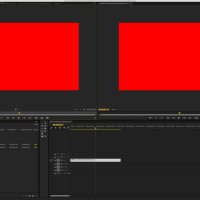It’s been two weeks since I first sent my laundry list of questions to Adobe and one week since I blogged about it. I’m still waiting for a response …
When I see smaller developers deliver products like Pixelmator 3.1 Marble, I have to wonder if Adobe’s grip on all things pixel related is finally starting to slip.
I know for a fact that my email has made it to the desk of some important people at Adobe. All we can do now is wait for an answer.
So while we sit and wait for Adobe to at least comment on why, in a nutshell, it has taken so long for any Adobe software to take full advantage of the hardware we buy, feel free to read about the guys over at Pixelmator.
The small startup company issued a press release on January 23rd (two days after my initial email to Adobe) stating that Pixelmator 3.1 Marble was FULLY OPTIMIZED to take advantage of all the glorious hardware in the new Mac Pro.
Here is a quote from the Pixelmator blog:
Fully optimized for the new Mac Pro, Pixelmator 3.1 Marble leverages the full power of the dual workstation-class GPUs built into it. Both graphics cards are used simultaneously to accelerate composition rendering and compute demanding tasks. This means that image editing is now completely seamless, and even with large and complex compositions you will experience profoundly faster and more responsive performance.
Pixelmator seems to be young enough and hungry enough to differentiate their product from Photoshop in the ways that get our attention.
- Hardware optimization is definitely one of those ways.
- Streamling the interface is definitely another way.
- Charging $29.99 is definitely another way.
I would guess that Pixelmator isn’t a true Photoshop alternative for everyone at this point (please tell me if I’m wrong) but its probably more than capable enough for most people. In my video editing workflow I really only need an image editor that is capable of some of the most basic tasks. Resizing images, a bit of retouching here and there, converting file formats, some image enhancements, removing backgrounds etc. Not much heavy lifting. I’m sure Pixelmator would do fine in this instance.
My photography workflow requires a bit more capabilities. I don’t know if Pixelmator is up to the task yet but after reading this announcement I’m very excited to find out (even though I don’t have a new Mac Pro yet!) .
I’ve owed a copy of Pixlemator since 2008 but I’ve never given it a chance (It was part of the 2008 MacHeist software bundle). I just tried installing the trial of the latest version but it requires Mavericks 10.9 and I haven’t upgraded my OS yet. My full review will have to wait.
Honestly, this should have been Adobe. This should have been a press release about Photoshop. As excited as I am for a small startup like Pixelmator to optimize their code to take advantage of all the GPU horsepower in the new Mac Pro, I’m even more disappointed in Adobe’s silence. That being said, I really don’t know how hard it is to optimize a piece of software like Photoshop. I have no idea how programming works. I wrote in my email to Adobe that I know enough to be dangerous. I’ll ask all of you. Is this a major undertaking? Enlighten me. How hard it is for Photoshop to be optimized like Pixelmator? Is there any reason why Adobe can’t issue a press release like the one from the Pixelmator team?
Whatever the reasons are for Adobe’s coding decisions (or lack there of) I have a feeling they are starting to feel the pressure. This blog post by Adobe’s Steve Forde proves they are hearing the call for optimization in After Effects. It also proves that they know how SLOW After Effects is and that hardware optimization is long overdue.
[CUE THE ANGRY ITALIAN] – It’s a joke that its taken this long for Adobe to even HINT at the idea of hardware optimization and After Effects. Just do it already and let us know it’s happening so we can invest in new hardware without regret!!!
Adobe’s decision to switch to the subscription pricing model was not widely accepted as positive. To be fair there are some benefits to a subscription pricing plan and Adobe has kept the updates and the new features coming in a fairly consistent basis since switching to Creative Cloud. But I believe that Adobe is going to have a hard time ignoring the call for hardware optimization by the people who are paying a subscription fee every month. Frustration levels can spike and subside when you are being charged only once every 12-16 months. Despite the difference in the cost Adobe will soon realize that frustration levels continue with every monthly reminder. There is nothing worse then feeling ignored by a company that continues to charge you on a repetitive basis. Adobe can continue to provide plenty of tiny updates and still fall into the doghouse if the demand for hardware optimization continues to go unanswered.
Now it seems like there might be developers like Pixelmator releasing seemingly viable alternatives at a fraction of the cost and Adobe is going to be forced to make a change in their thinking. How long before a workflow that consists of FCPX, Motion, Pixelmator and Capture One is viable? (still lacking a vector image editor in there)
So while we wait to see what Adobe’s answers are to the questions I posed in my email, take a look at Pixelmator’s site and see if there is a spot in your workflow for a hardware optimized image editor that costs under $30.
If anyone has a brand new Mac Pro maybe you can run a few Pixelmator vs. Photoshop comparison tests to see if the GPUs are being put to good use.
More later …
Lou Borella
————
Please post all comments directly on TheProMacBlog.com
They should all link to your Facebook account but any comments left on the Facebook Mac Pro page will not show up here.
Thanks, Lou …
Related Posts
A Direct Line to the After Effects Programming Team … Next Post:
Speed Gains from Optimized Software



